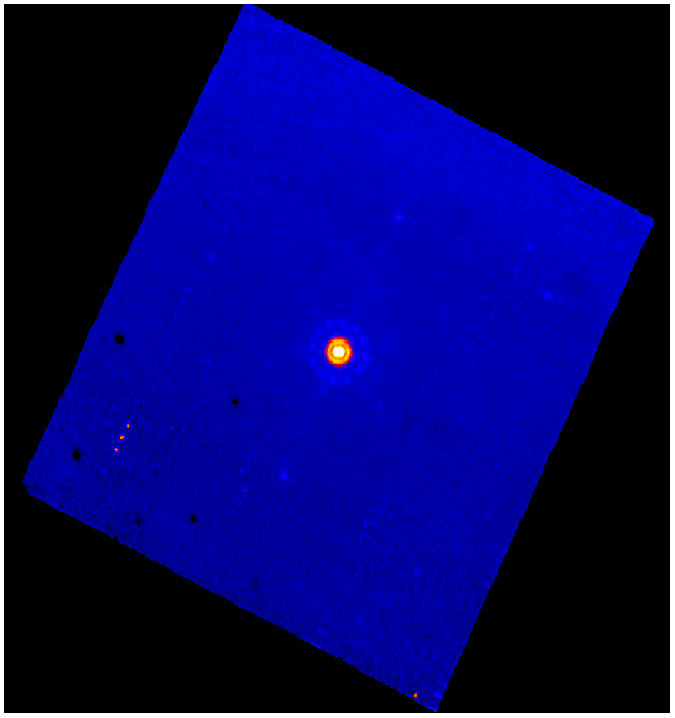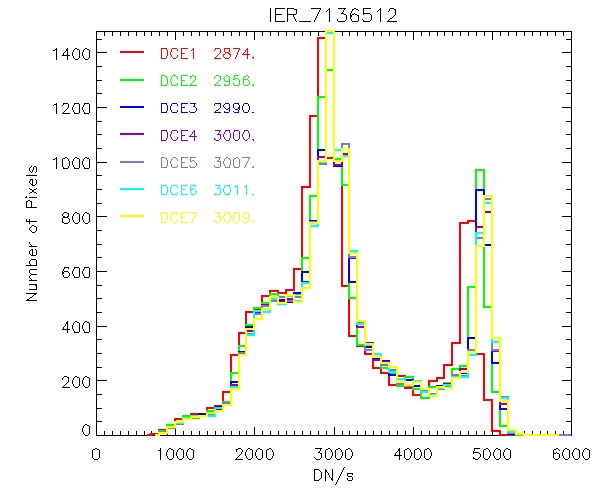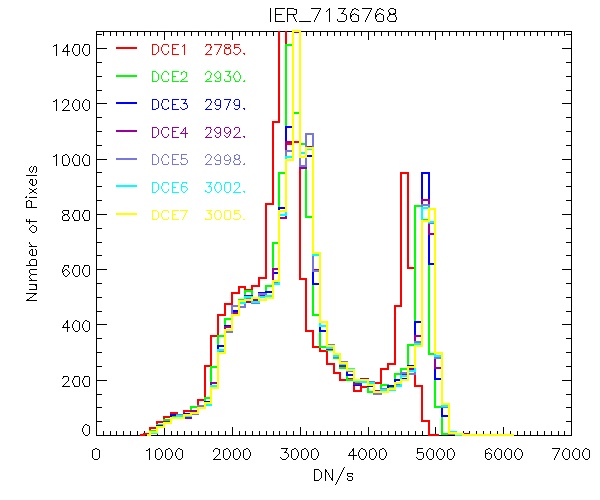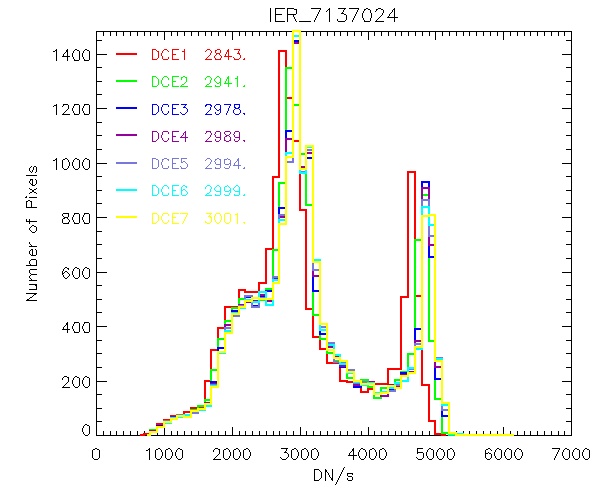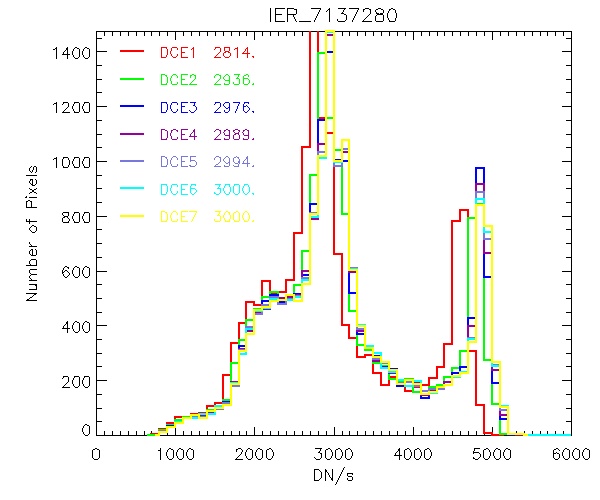Results
Data Collected
As expected, this task generated a total of 30 Si:As DCEs on the star and
10 more in the stim IER, for each execution.
A mosaiced image is shown in Figure 3.
System Throughput
We computed the total counts from the star in each of the 30 DCEs, using an
aperture 6 pixels in radius and a sky annulus 12 to 16 pixels in radius. The combined
of all five executions after applying the 1.15 aperture correction are
7.96e+04 ± 1.61e+02 (0.2%) DN/s (ignoring the boost DCEs) for the star,
and 348.86 ± 0.47 (0.1%) DN/s
for the sky annulus. The results for all five executions,
plus the mean results are shown
in figure 1. The mosaic'd image from the SSC post-BCD is shown in figure 2.
The flux density for the target star (HD159330) is 0.54 Jy
at 24µm, which yileds a conversion factor =
1.47e5 DN/s/Jy. This conversion factor is very similar to that measured for
this star during other campaigns. The implied background level is
348.86 DN/s / 1.47e5 DN/s/Jy * 1e-6 MJy/Jy / (2.47/206265)²
sr/pix = 16.5 MJy/sr. This is 22% higher than the prediction of 13.43 MJy/sr by SPOT.
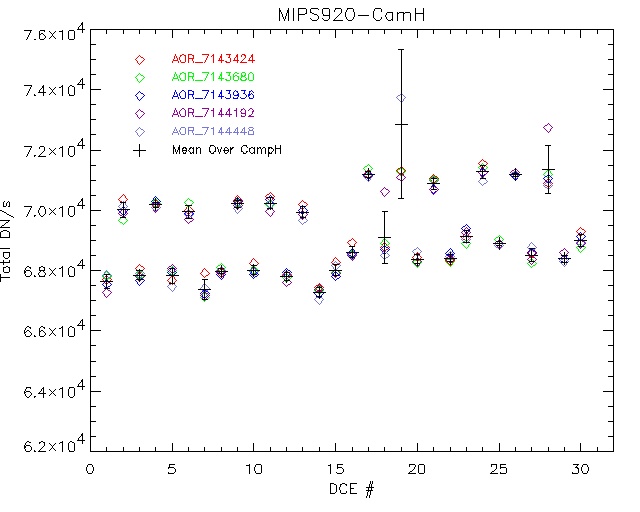
Figure 1:
The photometry in each DCE (representing in different color) for all the
five AORs is plotted below. The mean value for each DCE is also plotted
in black crosses with error bar representing the variation. (Note that the
photometry in DCE#18,#19, and #28 is affected by cosic rays; therefore,
larger error bars.)
Here is the mean and sigma for each DCE.
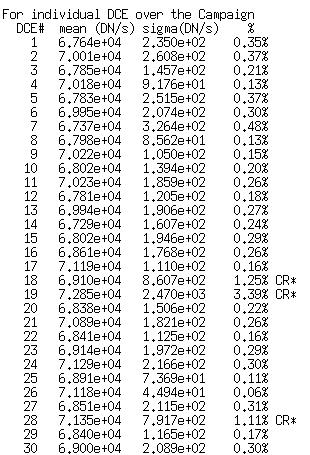
Average photometry over 30 DCEs in each ARO v.s.
observed time is plotted below, the 1-sigma variation is less than 0.2%
during the campaign.

The average total counts (before aperture correction) and the correction
factors are listed below.
The stimulator IER behaved as expected, producing 3 dark DCEs followed by
7 images of the flat-field stimulator. The data were processed with
mips_sloper in a fashion identical to that described above for the sky images.
The stimulator images were averaged and the mean data value in the stimulator
image (ignoring values below 100 DN/s, which are all bad pixels) is XXXX DN/s,
similar to values measured in earlier campaigns.



